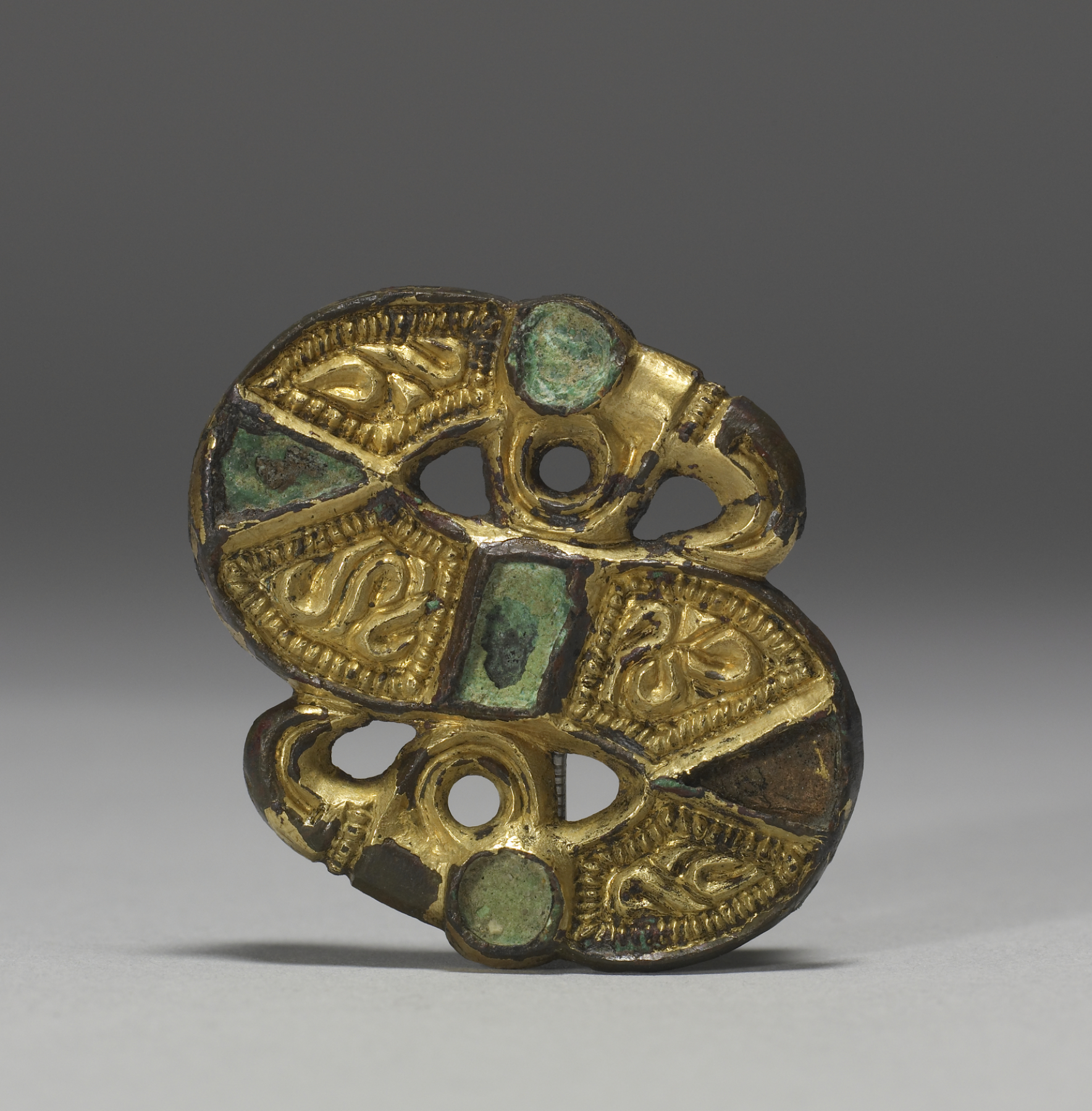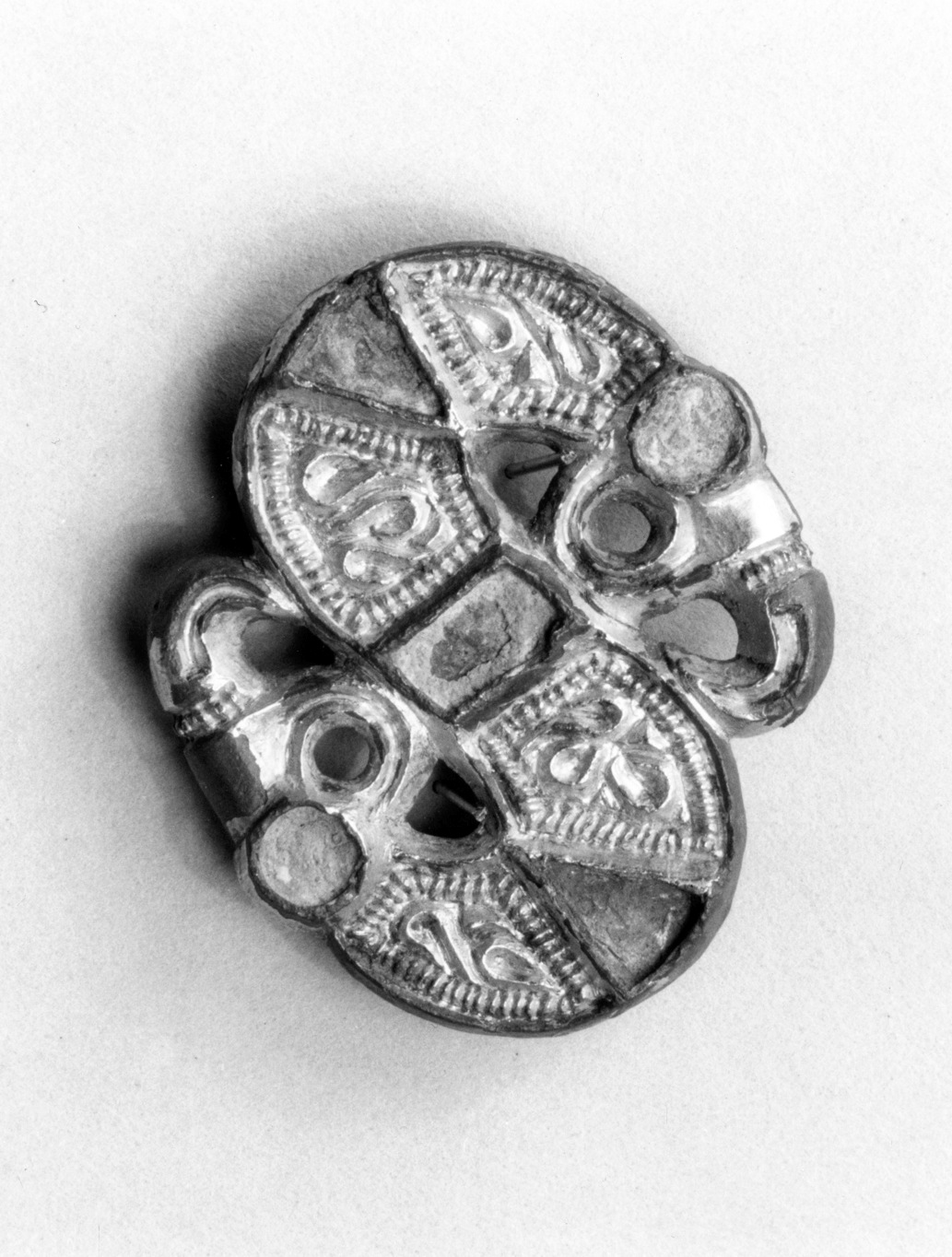Fibula
The Langobards, perhaps inspired by jewelry of the Goths, developed bird-headed, S-shaped fibulae during their 6th-century settlement in Pannonia (present-day Hungary). The body was cast from a carved mold and finished with gold gilding. The eyes originally were set with stones or glass. On the back, an iron pin set into a bronze hinge and J-shaped catch held the pin in place. The hinge and the catch are intact, while remains of the iron pin and the fragments of the textile to which this pin was attached remain in the hinge.
Provenance
Provenance (from the French provenir, 'to come from/forth') is the chronology of the ownership, custody, or location of a historical object. Learn more about provenance at the Walters.
Mathias Komor, New York; Walters Art Museum, October 14, 1958, by purchase.
Exhibitions
| 1979-1980 | Jewelry - Ancient to Modern. The Walters Art Gallery, Baltimore. |
Geographies
Italy (Place of Origin)
Measurements
1 7/16 x 1 3/8 x 1/8 in. (3.7 x 3.5 x 0.4 cm)
Credit Line
Museum purchase with funds provided by the S. & A.P. Fund, 1958
Location in Museum
Centre Street: Third Floor: Migration and Early Medieval Art
Accession Number
In libraries, galleries, museums, and archives, an accession number is a unique identifier assigned to each object in the collection.
In libraries, galleries, museums, and archives, an accession number is a unique identifier assigned to each object in the collection.
54.2440






